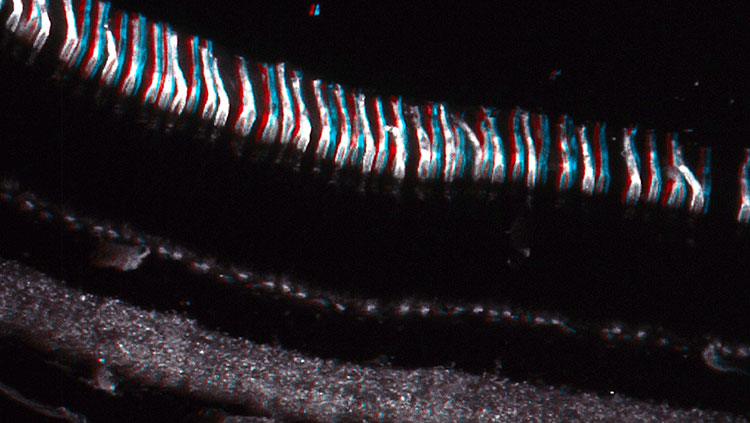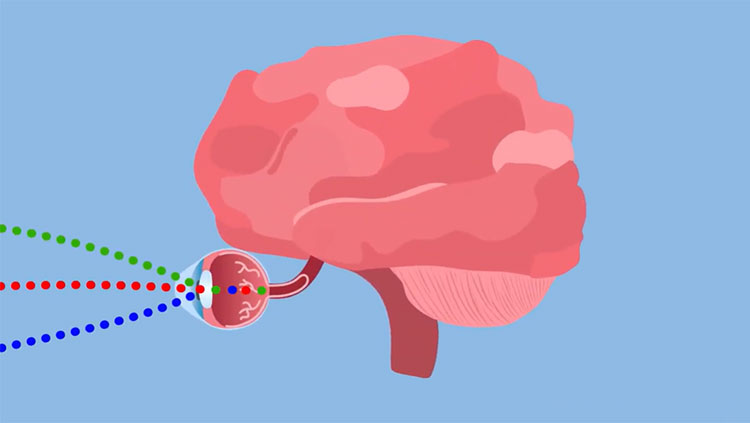The Cones That Color Your World
- Published14 Apr 2020
- Author Charlie Wood
- Source BrainFacts/SfN
Whether it’s a rainbow or a rose, these bristle-like cells let you know what colors you’re seeing. Buried in the back of your eyeball sit three types of “cone” cells that fire off a signal when struck by enough light of a particular wavelength composition. One type is especially responsive to shortwave light rays that typically appear blue, one responds best to green, and the third to red. By surveying how many cones of each variety have fired, the brain can mix and match to detect a spectrum of colors.
Most brains can, at least. Some people — roughly 8% of men but just half a percent of women — inherit genes that fail to produce three fully functional cones. Like artists working with restricted palettes, the brains of these “colorblind” folks can process a limited number of shades. At the other end of the scale, some people — usually women — appear to have the genetic machinery to make four cones, letting them tell the difference between two shades that appear identical to most people.
CONTENT PROVIDED BY
BrainFacts/SfN
References
Color Blindness Facts & Statistics: Prevalence. (n.d.). Retrieved from https://www.colour-blindness.com/general/prevalence/
Jordan, G., Deeb, S. S., Bosten, J. M., & Mollon, J. D. (2010). The dimensionality of color vision in carriers of anomalous trichromacy. Journal of Vision, 10(8), 12–12. doi: 10.1167/10.8.12
Purves, D. (1970, January 1). Cones and Color Vision. Retrieved from https://www.ncbi.nlm.nih.gov/books/NBK11059/
Turbert, D. (2019, September 6). What Is Color Blindness? American Academy of Ophthalmology. Retrieved from https://www.aao.org/eye-health/diseases/what-is-color-blindness



















